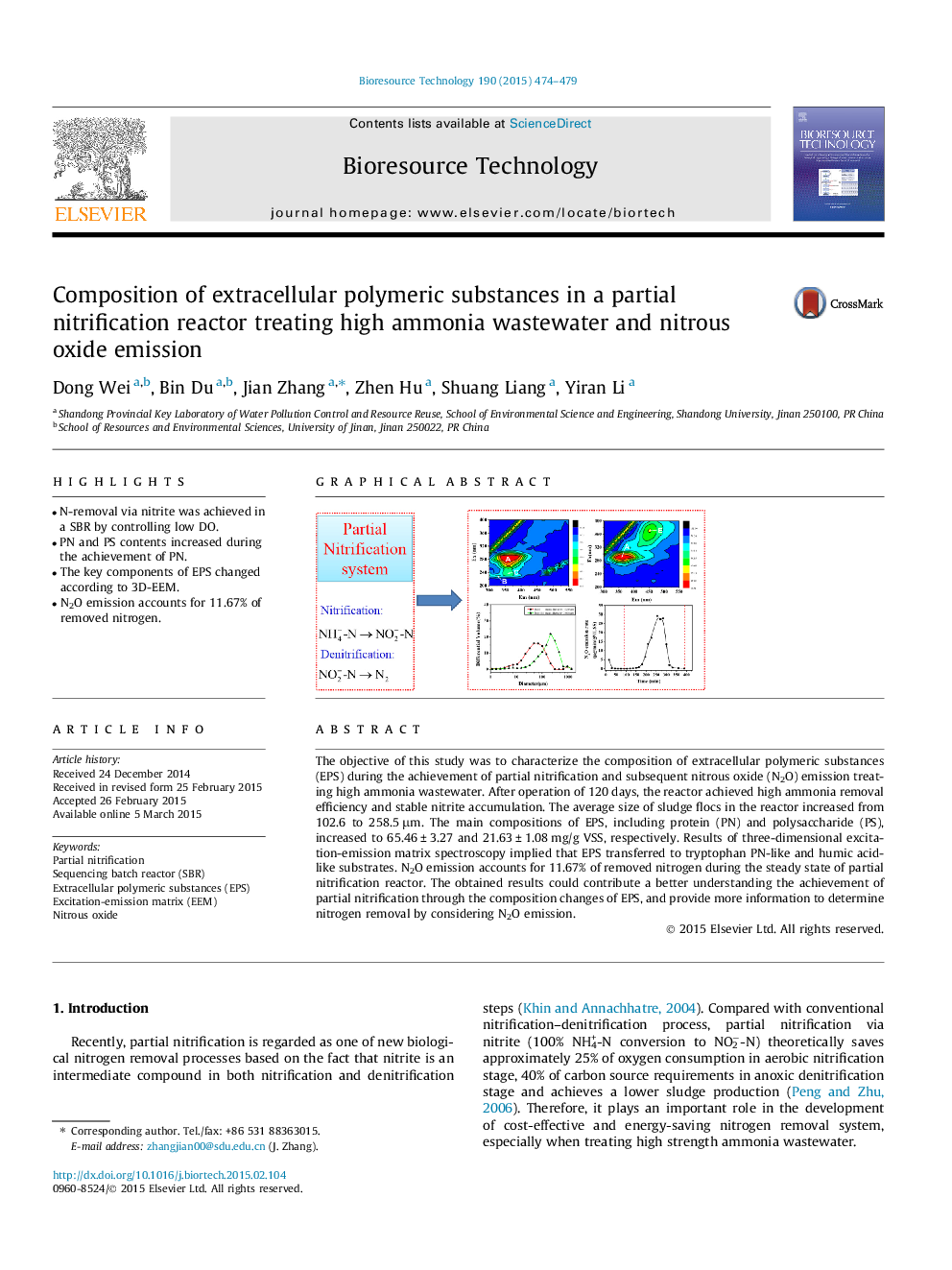| Article ID | Journal | Published Year | Pages | File Type |
|---|---|---|---|---|
| 679622 | Bioresource Technology | 2015 | 6 Pages |
•N-removal via nitrite was achieved in a SBR by controlling low DO.•PN and PS contents increased during the achievement of PN.•The key components of EPS changed according to 3D-EEM.•N2O emission accounts for 11.67% of removed nitrogen.
The objective of this study was to characterize the composition of extracellular polymeric substances (EPS) during the achievement of partial nitrification and subsequent nitrous oxide (N2O) emission treating high ammonia wastewater. After operation of 120 days, the reactor achieved high ammonia removal efficiency and stable nitrite accumulation. The average size of sludge flocs in the reactor increased from 102.6 to 258.5 μm. The main compositions of EPS, including protein (PN) and polysaccharide (PS), increased to 65.46 ± 3.27 and 21.63 ± 1.08 mg/g VSS, respectively. Results of three-dimensional excitation-emission matrix spectroscopy implied that EPS transferred to tryptophan PN-like and humic acid-like substrates. N2O emission accounts for 11.67% of removed nitrogen during the steady state of partial nitrification reactor. The obtained results could contribute a better understanding the achievement of partial nitrification through the composition changes of EPS, and provide more information to determine nitrogen removal by considering N2O emission.
Graphical abstractFigure optionsDownload full-size imageDownload as PowerPoint slide
